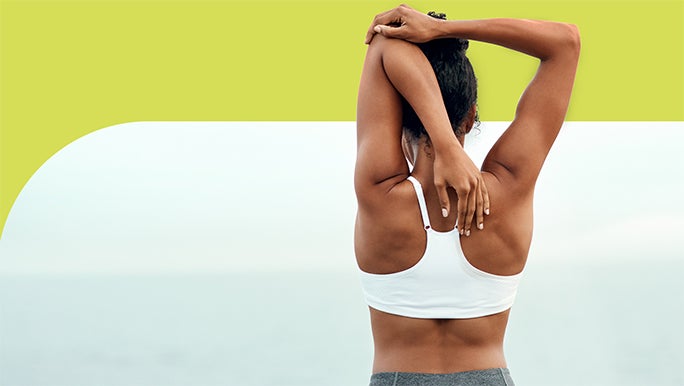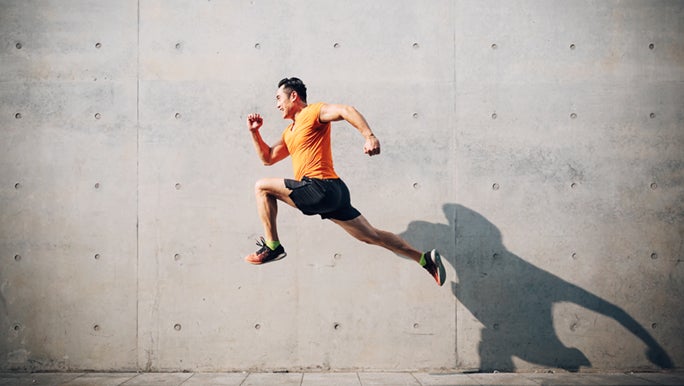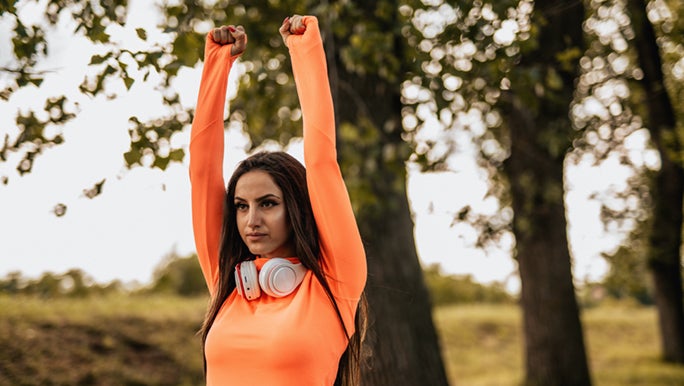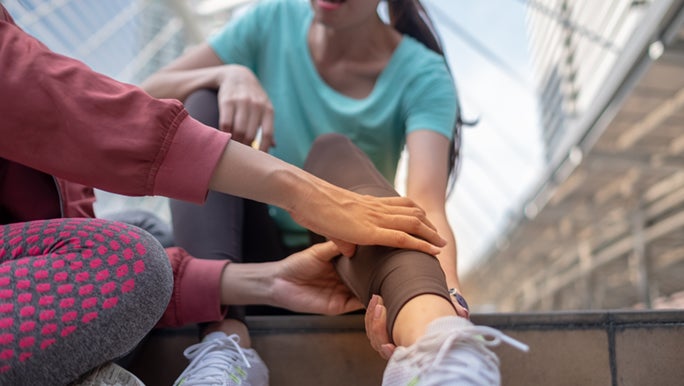Does warming up really prevent sporting injuries?

Yes! It really can. Before you jump onto the tennis court or take off for a run, you really should consider taking the time to warm up.
Starting a workout without warming up your muscles can lead to injury. It’s the same situation for beginners, professional athletes and everyone in between.
You see, most warm up routines raise your heart rate and speed up your breathing. This pumps oxygenated blood to your muscles and makes you puff a little.
So, how does warming up prevent injury? Well, it helps prepare your body for cardiovascular activity. Supple, warm muscles are more flexible, so are less prone to strain and injury.
Not just contact sports
It’s not just sports like footy and boxing that cause sporting injuries. Yes, they do include added risk as they are contact sports. But, sports such as cycling, basketball and skiing are also prone to causing injuries.
We asked Brad McIntosh, Physiotherapist, what causes sports injuries?
“The most common reason for people coming in to see us for a sports-related injury is training error, such as increasing activity too quickly. For example, launching into a running programme and building kilometres too fast. If the body is unable to adapt to the new loads, injury may occur,” says Brad.

Warming up helps prepare your body for cardiovascular activity. Supple, warm muscles are more flexible, so are less prone to strain and injury.
Top 5 sporting injuries
In 2016–17, almost 60,000 people were hospitalised for sports injuries in Australia.
But, most sporting injuries don’t make it to hospital. So, we asked Brad what were the most common sporting injuries that present to physiotherapy clinics? He said these are the five most common sports injuries people seek treatment for.
- anterior knee pain, which is a pain at the front of the knee
- ankle sprains
- muscle strains including hamstring, quad, calf and groin
- plantar fasciitis
- rotator cuff – or shoulder – injuries and impingement
You’ve probably heard a lot about a common knee injury – the ACL sprain or tear. It’s a leading sporting injury because it can occur from a variety of movements. Such as a sudden stop, twist, pivot or change in direction at the knee joint, or an extreme hyperextension of the knee.
Essentially, it’s where the ligament is stretched beyond its normal range.

Before you jump onto the tennis court or take off for a run, you really should take the time to warm up.
Sporting injury prevention techniques
To help prevent sporting injuries Brad has the following tips.
“Preparation and training plan is the key,” says Brad.
To prevent knee, muscle and other sports injuries, make sure you get some help with your movement and technique.
Brad also recommends allowing the body to adapt to a new exercise by starting slowly and based on your level of fitness. He says to increase your training gradually.
Make sure you're using good equipment, including the correct footwear. And don’t forget to keep hydrated before, during and after exercise plus eat well.
‘This will allow your body to recover more quickly, rebuild the damaged tissues after exercise, and get you back out there faster and stronger,’ says Brad.
Have a good training plan
Work with a GP, physiotherapist or personal trainer to create a training plan. Increase your training slowly and stay consistent.
Strengthening the muscles in your entire body will boost your confidence and ability to exercise without causing pain.
If you’ve had an injury in the past, working with a professional will help prevent future injuries.
Don’t skip the warm up
Most importantly, make sure you warm up before physical activity.
Include a combination of light to moderate aerobic exercise, dynamic stretching and movements similar to your sport or physical activity.
“This should last for 5-10 minutes before every intense exercise session,” says Brad.
Gentle stretching after your warm up may help manage any muscle soreness you may have from yesterday’s activities.

It’s not just sports like footy and boxing that cause sporting injuries, sports such as cycling, basketball and skiing are also prone to causing injuries.
How to treat a sporting injury
You probably remember seeing a GP for a twisted ankle and they recommended a simple self-care technique called RICE:
- Rest – stop exercising for 2 days
- Ice – apply an ice pack for 15 to 20 minutes every two to three hours, for 24 to 48 hours
- Compression – wrap in an elastic medical bandage that’s not too tight
- Elevation – raise the injury above the level of your heart.
It reduces swelling and pain – and helps speed up recovery.
But, RICE isn’t the right treatment for all sporting injuries. Other methods include physical activity instead of rest.

If you do obtain an injury, be sure to seek advice from a professional such as your GP or physiotherapist.
Can exercise prevent sporting injuries?
Yes, it can. Brad says that every one of us, regardless of our sporting interests, should be doing some core strengthening exercises – including the gluteals.
Resistance training also helps keep your bones and muscles strong, which is important for all physical activities. So, include core and resistance training in your fitness plan.
Brad also recommends stretching out hamstrings regularly as we lead a sedentary life. Sitting in a chair at work and in the car also tightens the front of our hips.
Warming up is one way to help prevent sporting injuries
So, before you hop on the elliptical, remember to warm up. It’s the one important thing you can do to prevent sporting injuries.
If you do obtain an injury, be sure to seek advice from a professional such as your GP or physiotherapist.
Working towards an ambitious fitness goal?
In addition to warming up correctly, it's important to look at how you structure your training. Find out more about ‘periodisation’ from our expert Accredited Exercise Physiologist, Sam Rooney. Check out our free Ways To Move programs for more tips and tricks to kickstart your fitness journey.
Related:
- How much exercise do I need?
- How can I bring better food into my diet?
- How to create healthy habits you can actually stick to (for good this time)
Brad McIntosh is a highly-trained and well-regarded physiotherapist with a particular clinical and research interest in knee rehabilitation.
Reviewed by the healthylife Advisory Board June 2021